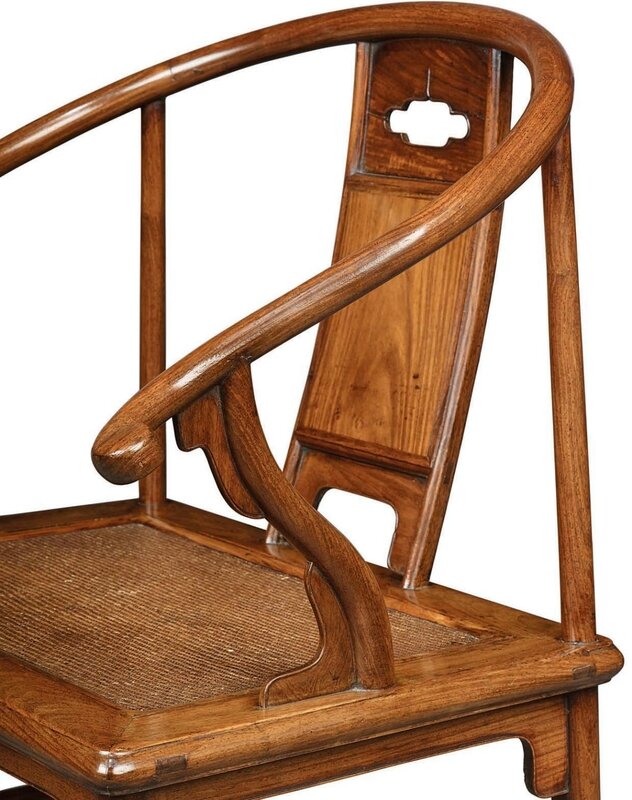![100-2]()
Lot 100. An Art Deco Sapphire and Diamond Brooch from the Collection of H.R.H. The Princess Margaret. Estimate : £ 35000 - 55000. Courtesy Boningtons
EPPING.- In the world of fine jewels, provenance is second only to inherent quality. If a jewel has previously been owned by a celebrity – Elizabeth Taylor, for example – that connection becomes a permanent part of its history and allure. But an even greater level of cachet is added when jewelry has been part of a royal collection. That is the case with a boutique selection in Boningtons’ November 15 auction that features exquisite jewelry and objets d’art formerly in the Collection of Her Royal Highness The Princess Margaret, Countess of Snowdon.
The daughter of H.M. King George VI and Queen Elizabeth the Queen Mother, and the only sibling of H.M. Queen Elizabeth II, Princess Margaret was renowned for her beauty and fashion sense, as well as an artsy entourage that included society, show business celebrities and bohemians. In 2006, four years after Margaret’s passing, Christie’s auctioned a portion of her salubrious estate holdings that included an exquisite Faberge clock (world record US$1.64 million) and the Poltimore tiara ($1.23 million), which the princess wore in her 1960 wedding to Antony Armstrong-Jones, Lord Snowdon.
Now, 11 years after that headlining-making auction, there will be a second opportunity to bid on jewelry of the highest quality from Princess Margaret’s collection. Each of the 13 royal lots was purchased at the 2006 Christie’s auction and conveys with a leather-cased, wax-sealed Certificate of Provenance from Kensington Palace, signed by Princess Margaret’s son, Viscount Linley, and Christie’s International’s then-CEO, Edward Dolman.
Among the auction highlights is Princess Margaret’s magnificent circa-1925 sapphire and diamond brooch. It is designed in Art Deco style as an openwork geometric plaque with three rectangular sapphires set to the single and old-cut diamond border. Presented in a blue leather case from Collingwood (Jewellers) Ltd, 46 Conduit Street, the brooch comes with unique provenance, having been a family gift to Margaret on her confirmation day. It comes with a note in the hand of her grandmother, H.M. Queen Mary, that says, “For darling Margaret on her confirmation day from her loving Grannie Mary R God bless you. April 15th 1946.” It is expected to make $46,400-$72,900.
![100-1]()
![100-3]()
Lot 100. An Art Deco Sapphire and Diamond Brooch from the Collection of H.R.H. The Princess Margaret. Estimate : £ 35000 - 55000. Courtesy Boningtons
The openwork geometric plaque set with three rectangular sapphires to the single and old-cut diamond border, millegrain setting, circa 1925, 4.5 cm. wide, in fitted blue leather Collingwood (Jewellers) Ltd., 46 Conduit St., case, accompanied by a note in the hand of H.M. Queen Mary, 'For darling Margaret on her confirmation day from her loving Grannie Mary R God bless you. April 15th 1946.'
Note: H.R.H. The Princess Margaret was confirmed on 15th April 1946 in the Private Chapel at Windsor Castle by the Archbishop of Canterbury, Geoffrey Fisher, assisted by the Dean of Windsor, Sir Eric Knightley Chetwode Hamilton, and Canon Stafford Crawley of St. George's Chapel Windsor. It seems highly likely that this confirmation gift from her grandmother was a jewel previously in H.M. Queen Mary's private collection and passed on to her granddaughter on this special occasion.
Provenance: Jewellery and Faberge, from the Collection of H.R.H The Princess Margaret, Countess of Snowdon, Christie's, London, 13th June 2006, Lot 137, where acquired by the present vendor. Lot includes original leather cased Kensington Palace Certificate of Provenance bearing wax seal.
A suite consisting of an emerald and diamond ring with matching earclips is also one of the premier jewelry lots in Boningtons’ sale. The ring is set with a rectangular-cut emerald between tapered baguette diamond corners to the bombe, pave-set diamond mount and shoulders. The pre-sale estimate is $10,600-$15,900.
![96]()
Lot 96. An Emerald and Diamond Ring and Pair Of Earclips from the Collection of H.R.H. The Princess Margaret. Estimate : £ 8000 - 12000. Courtesy Boningtons
The ring set with a rectangular-cut emerald between tapered baguette diamond corners to the bombé pavé-set diamond mount and shoulders, earrings en suite (3).
Provenance: Jewellery and Faberge, from the Collection of H.R.H The Princess Margaret, Countess of Snowdon, Christie's, London, 13th June 2006, Lot 150. Lot includes original leather cased Kensington Palace Certificate of Provenance bearing wax seal.
A superb antique diamond and enamel bracelet features old and rose-cut diamond floral clusters on blue enamel, with rose-cut diamond expandable links. A stunning and most original design, it bears the Victorian registration mark for November 1, 1842. The bracelet is presented in a later, fitted green leather box from Garrard & Co., London. The auction estimate is $26,500-$39,700.
![97]()
![97-1]()
![97-2]()
Lot 96. An Antique Diamond and Enamel Bracelet from the Collection of H.R.H. The Princess Margaret. Estimate : £ 20000 - 30000. Courtesy Boningtons
Composed of old and rose-cut floral clusters to the blue enamel and rose-cut diamond expandable rectangular links, 5.2 cm. diameter, with Victorian registration mark for 1st November 1842, in later fitted green leather Garrard & Co. Ltd., Regent Street, case.
Provenance: Jewellery and Faberge, from the Collection of H.R.H The Princess Margaret, Countess of Snowdon, Christie's, London, 13th June 2006, Lot 179, where acquired by the present vendor. Lot includes original leather cased Kensington Palace Certificate of Provenance bearing wax seal.
Wonderfully designed with an oval cabochon turquoise serving as the central point in a diamond-studded bow, an antique silver and gold brooch dates to around 1860. The central cluster is detachable, as is the brooch fitting, making the piece as versatile as it is beautiful. Estimate: $15,900-$23,800.
![106]()
Lot 106. An Antique Turquoise and Diamond Bow Brooch from the Collection of H.R.H. The Princess Margaret. Estimate : £ 12000 - 18000. Courtesy Boningtons
The old-cut diamond ribbons to the central oval cabochon turquoise and diamond cluster, with pendant loop, mounted in silver and gold, circa 1860, 5.8 cm. wide, central cluster detachable and brooch fitting detachable.
Provenance: Jewellery and Faberge, from the Collection of H.R.H The Princess Margaret, Countess of Snowdon, Christie's, London, 13th June 2006, Lot 105, where acquired by the present vendor. Lot includes original leather cased Kensington Palace Certificate of Provenance bearing wax seal.
A circa-1840 gold demi-parure consists of a matching bracelet, brooch and pair of earrings (later adapted), each component piece designed as a hollow-gold engraved knot with suspended twin tassels. The suite comes in its original fitted maroon leather case and is estimated at $10,600-$15,900.
![99]()
Lot 99. An Antique Gold Demi-Parure from the Collection of H.R.H. The Princess Margaret. Estimate : £ 8000 - 12000. Courtesy Boningtons
Consisting of a bracelet, brooch and pair of earrings, each designed as a hollow gold engraved knot suspending twin tassels, circa 1840, earrings later adapted, bracelet 6.5 cm. wide, in original fitted maroon leather case, some tassels deficient (4).
Provenance: Jewellery and Faberge, from the Collection of H.R.H The Princess Margaret, Countess of Snowdon, Christie's, London, 13th June 2006, Lot 86, where acquired by the present vendor. Lot includes original leather cased Kensington Palace Certificate of Provenance bearing wax seal.
An exceptionally fine Russian Faberge cut-glass box with vari-colored, gold-mounted lapis lazuli bears the workmaster’s mark of Henrik Wigstrom, St. Petersburg, 1896-1908; and the scratched inventory number “11595.” The cover is engraved around the edges with floral garlands as well as within the gold laurel-leaf border. Measuring 6.6cm long, the box carries the highest estimate in the sale: $79,500-$106,000.
![98]()
![98-1]()
Lot 98. A Russian Vari-Coloured Gold-Mounted Lapis Lazuli and Cut Glass Box by Fabergé with the workmaster's mark of Henrik Wigström, St. Petersburg, 1896-1908, from the Collection of H.R.H. The Princess Margaret. Estimate : £ 60000 - 80000. Courtesy Boningtons
with scratched inventory number 11595. Rectangular, the body of polished lapis within red gold dot and dash mounts, the cut glass cover engraved around the edges with floral garlands and within green gold laurel leaf border, marked on mount, 6.6 cm. long.
Provenance: Jewellery and Faberge, from the Collection of H.R.H The Princess Margaret, Countess of Snowdon, Christie's, London, 13th June 2006, Lot 126, where acquired by the present vendor. Lot includes original leather cased Kensington Palace Certificate of Provenance bearing wax seal.
Highly decorative, a Continental gold-mounted gray agate snuffbox dates to the first half of the 20th century and is embellished with diamond mounted gold and silver drapery swags around its sides. The hinged cover features and egg-and-dart border with an applied twisted drapery motif and a diamond border surrounding a central paste stone. Possibly of German manufacture but with French import marks, it comes to auction with a $13,250-$19,900 estimate.
![105]()
Lot 105. A Continental Gold-Mounted Grey Agate Snuff-Box bearing spurious marks for Fabergé, possibly German, first Half 20th Century, from the Collection of H.R.H. The Princess Margaret. Estimate : £ 10000 - 15000. Courtesy Boningtons
oblong with canted corners, the sides applied with diamond mounted gold and silver drapery swags, the base applied with an openwork mount, the hinged cover with an egg-and-dart border and with an applied twisted drapery motif and a central foiled cut paste within a diamond border, marked on rim and with French import marks, contained in a fitted purple velvet case, 3 3/8 in. (85 mm.) wide.
Provenance: Silver, Furniture and Works of Art from the Collection of H.R.H. The Princess Margaret, Countess of Snowdon, Christie's, London, 14th June 2006, Lot 460, where acquired by the present vendor. Lot includes original leather cased Kensington Palace Certificate of Provenance bearing wax seal.
Other items from the royal collection include a circa-1950 Cartier gem-set gold cigarette case, an 1834 William IV gold snuffbox, a diamond and silver-set lapis lazuli desk seal in case, a circa-1905 gem-set platinum and chalcedony card case, and antique decorative art.
![103]()
Lot 103. A French Gem-Set Gold Cigarette-Case, Mark of Cartier, Paris, Circa 1950, from the Collection of H.R.H. The Princess Margaret. Estimate : £ 4000 - 6000. Courtesy Boningtons
Oblong with reeded sides, base and hinged cover, the ends set with three rows of 18 square-cut rubies, with a ruby-set thumbpiece, the inside engraved with an initial 'M' below a Royal Princess' coronet, marked inside and on cover, the rim engraved 'Cartier Paris' and numbered 'OC107', 3 1/8 in. (80 mm.) wide, gross weight 4 oz. (120 gr.).
Note: The initial is that of H.R.H. The Princess Margaret, Countess of Snowdon.
Provenance: Silver, Furniture and Works of Art from the Collection of H.R.H. The Princess Margaret, Countess of Snowdon, Christie's, London, 14th June 2006, Lot 341, where acquired by the present vendor. Lot includes original leather cased Kensington Palace Certificate of Provenance bearing wax seal.
![104]()
Lot 104. A William IV Gold Snuff-Box, London, 1834, Maker's Mark TE, from the Collection of H.R.H. The Princess Margaret. Estimate : £ 2000 - 3000. Courtesy Boningtons
18ct, oblong and with engine turned sides and base, the hinged cover later engraved with a coat-of-arms, marked inside and on cover, 3 1/8 in. (7.8 cm.) long, 3.5 oz. (105 gr.).
Note: The arms are those of Lamb, presumably for William, 2nd Viscount Melbourne, (1779-1848). It is possible that the box was commissioned and engraved to commemorate the appointment of Lord Melbourne as Prime Minister on 18 July 1834, an office he was to hold until 1841, apart from the brief interlude from 26 December 1934 to 18 April 1835 when the office was held by Sir Robert Peel.
Provenance: Silver, Furniture and Works of Art from the Collection of H.R.H. The Princess Margaret, Countess of Snowdon, Christie's, London, 14th June 2006, Lot 399, where acquired by the present vendor. Lot includes original leather cased Kensington Palace Certificate of Provenance bearing wax seal.
![95]()
![95-1]()
Lot 95. A Diamond and Silver-Set Lapis-Lazuli Desk-Seal retailed by Heming & Co., Early 20th,from the Collection of H.R.H. The Princess Margaret. Estimate : £ 2000 - 3000. Courtesy Boningtons
the tapering lapis-lazuli handle with a pearl finial within rose diamond set silver arches, the plain matrix set within a similar rose diamond set silver cagework, contained in a fitted red leather case, labelled 'By Appointment Heming & Co. 28 Conduit Street London, W.' - 1 7/8 in. (49 mm.) high.
Provenance: Silver, Furniture and Works of Art from the Collection of H.R.H. The Princess Margaret, Countess of Snowdon, Christie's, London, 14th June 2006, Lot 457, where acquired by the present vendor. Lot includes original leather cased Kensington Palace Certificate of Provenance bearing wax seal.
![102]()
![102-1]()
Lot 102. A Gem-Set Platinum and Chalcedony Card-Case from the Collection of H.R.H. The Princess Margaret, Attributed to Cartier, Paris, Circa 1905. Estimate : £ 6000 - 8000. Courtesy Boningtons
Oblong, the clasp and two hinges each set with rose-cut diamonds, emeralds and sapphires, contained in a fitted red leather case with the traces of a Cartier label, 3 5/8 in. (92 mm.) high.
Provenance: Silver, Furniture and Works of Art from the Collection of H.R.H. The Princess Margaret, Countess of Snowdon, Christie's, London, 14th June 2006, Lot 340, where acquired by the present vendor. Lot includes original leather cased Kensington Palace Certificate of Provenance bearing wax seal.
![101]()
Lot 101. A Pair of 18th century Dresden Carved Ivory Figures Representing Spring and Autumn from the Collection of H.R.H. The Princess Margaret, The Earl and Countess of Rosebery's Wedding Present. Estimate : £ 6000 - 8000. Courtesy Boningtons
each on integrally carved rectangular plinth and a contemporary square-based amber veneered moulded pedestal; a repair to Spring's left hand and minor loss to Autumn's left hand; each figure embellished with later multi-coloured glass pastes, some of which are now lacking; minor losses to the bases; general minor repairs. 4 in. (10.2 cm.) high; 6¾ in. (17.1 cm.) high, overall (2).
Note: The two ivory figures were recorded in the Amber Room at Mentmore, Buckinghamshire in 1934 and listed in Mentmore, Volume II, page 84, number 30 and 32, attributed to Dinglinger. Number 31 was sold at Mentmore, Sotheby's house sale, 18th - 23rd May 1977, lot 1892. The statuettes of flower-wreathed Flora and a vine-wreathed bacchante personifying the Seasons of Spring and Autumn, which are richly jewelled in Eastern fashion, formed part of the famed objets d'art collection displayed in the 'Amber' room created by Baron Mayer Amschel de Rothschild (d.1870) at Mentmore, Buckinghamshire. Together with the companion Summer figure of Ceres, they were prized as the work of Augustus the Strong's Dresden-based goldsmith Johann Melchior Dinglinger (d.1731) (Mentmore Catalogue, 1934, Vol. II, p.84, nos. 30-32). Related Seasons by the Dieppe sculptor Jean-Antoine Belleteste (d.1811) are illustrated F. St. Aubyn (ed), vory, London, 1987 (p.117).
Provenance: Silver, Furniture and Works of Art from the Collection of H.R.H. The Princess Margaret, Countess of Snowdon, Christie's, London, 14th June 2006, Lot 820, where acquired by the present vendor. Lot includes original leather cased Kensington Palace Certificate of Provenance bearing wax seal.
![107]()
![107-1]()
Lot 107. A Fan, Circa 1900, from The Collection of H.R.H. The Princess Margaret. Estimate : £ 7000 - 10000. Courtesy Boningtons
The leaf of fine Honiton lace worked with palmettes reminiscent of Prince of Wales feathers, the guard sticks piqué with classical devices including cupid's arrow, the sticks 10 in. (26 cm.); sold together with a letter in Queen Mary's hand inscribed 'Honiton lace fan made to order of Victoria Mary, Princess of Wales, for the St. Louis Exhibition, U.S.A. in 1904, given to Princess Margaret by her grandmother Queen Mary in 1939', the box inscribed 'Princess Margaret'.
Note: In 1904, St. Louis hosted 'The Greatest of Expositions' for seven months. By far the largest of the several Victorian-era world's fairs, it occupied over 1,200 acres at the Western edge of St. Louis. Also known as the Louisiana Purchase Exposition, the Fair commemorated the 1803 purchase of territory that more than doubled the size of the United States. Though originally planned to take place in 1903, the Fair was delayed to 1904 in order to complete the construction of state and foreign buildings, and to permit the gathering of the thousands of exhibits. From April 30 to December 1, 1904, the Fair displayed the art, science, and cultures of the entire world. Over twelve million visitors paid 50 cents admission to enter the Fair. About sixty countries, forty-three of the then forty-five U.S. states and several U.S. territories, and hundreds of manufacturers and companies gathered together to put on an unsurpassed display of civilization, history, and culture. On display were the latest manufacturing products and processes, scientific inventions and innovations, agricultural advances, and famous paintings, sculptures, and art treasures. Queen Mary requested the fan to be made for display at the St. Louis Exhibition in 1904 and later gave the fan to H.R.H. The Princess Margaret, Countess of Snowdon in 1939.
Provenance: H.M. Queen Mary (1867-1953); Silver, Furniture and Works of Art from the Collection of H.R.H. The Princess Margaret, Countess of Snowdon, Christie's, London, 14th June 2006, Lot 326, where acquired by the present vendor. Lot includes original leather cased Kensington Palace Certificate of Provenance bearing wax seal.
Boningtons’ Nov. 15, 2017 Fine Art & Antiques Auction featuring important jewelry and objets d’art from the Collection of H.R.H. The Princess Margaret will begin at 11 a.m. UK time (6 a.m. US Eastern Time). The gallery is located in Epping, Essex, in Greater London.






























































































































